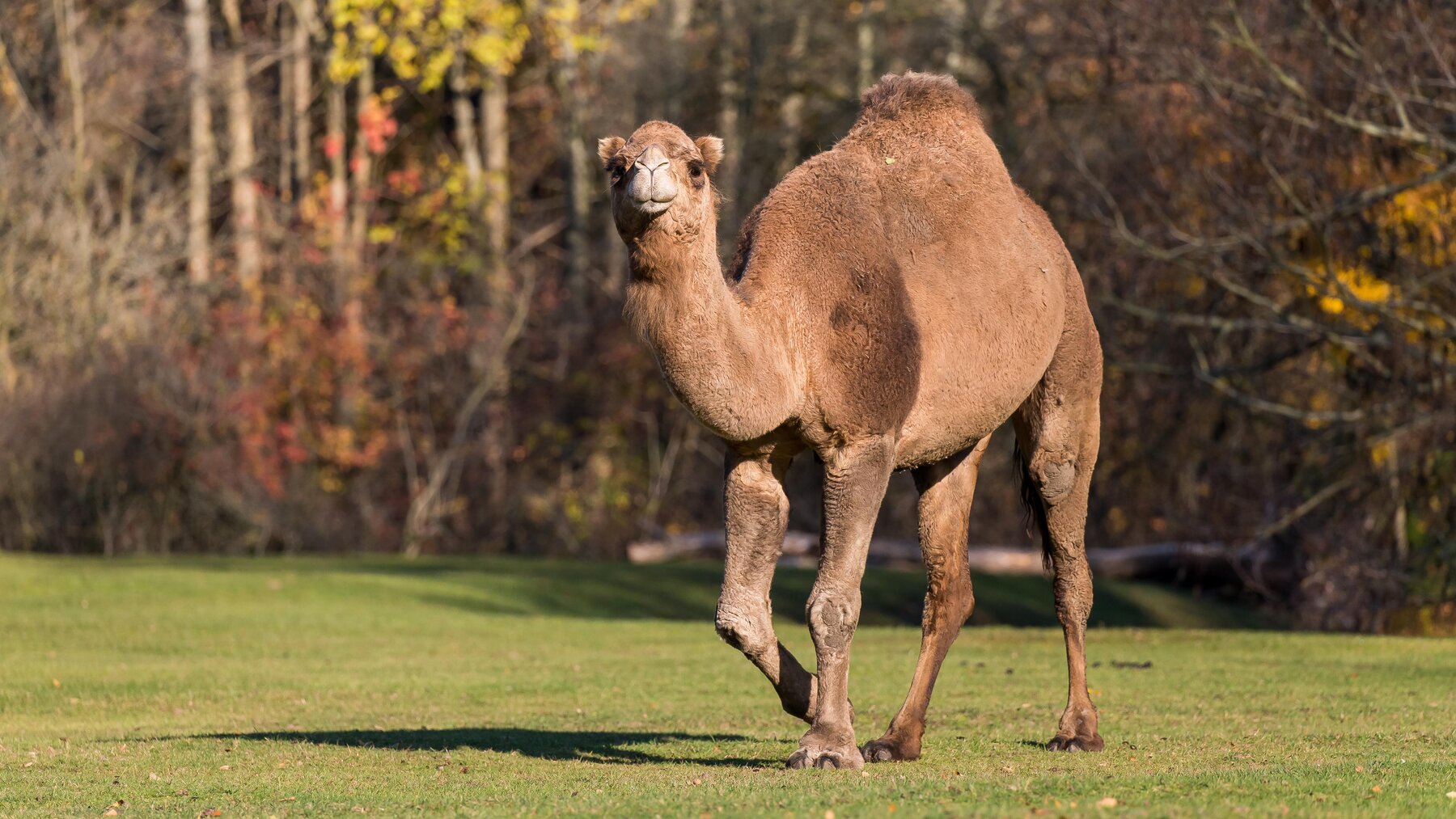
Domestic Arabian Camel
Characteristics
- Origin
Northern and eastern Africa, south-western Asia
- Habitat
Steppes and (semi-)deserts
- Diet
Herbaceous plants, grasses, twigs, leaves
- Status
least concern
- Size
1,7 to 2 m
- Weight
300 to 600 kg
- Gestation period
15 months
- Achievable age
up to 30 years
Threat Categories of IUCN


A bellowing serenade
Male Arabian camels perform a special ritual to impress their chosen mate: they inflate their soft palate and let it dangle out the side of their mouth. This “dulaa”, as it is known in Arabic, helps to amplify their gurgling mating calls.

